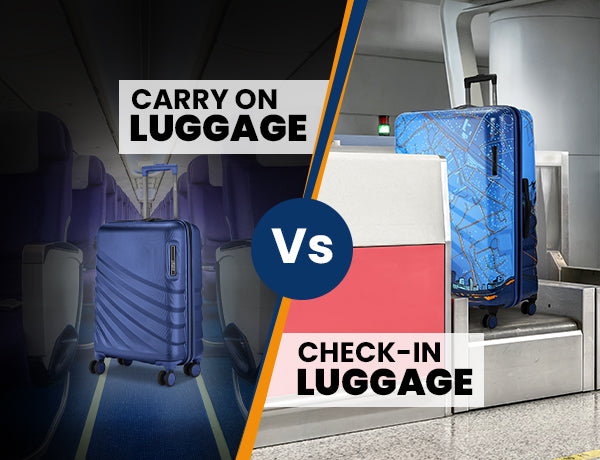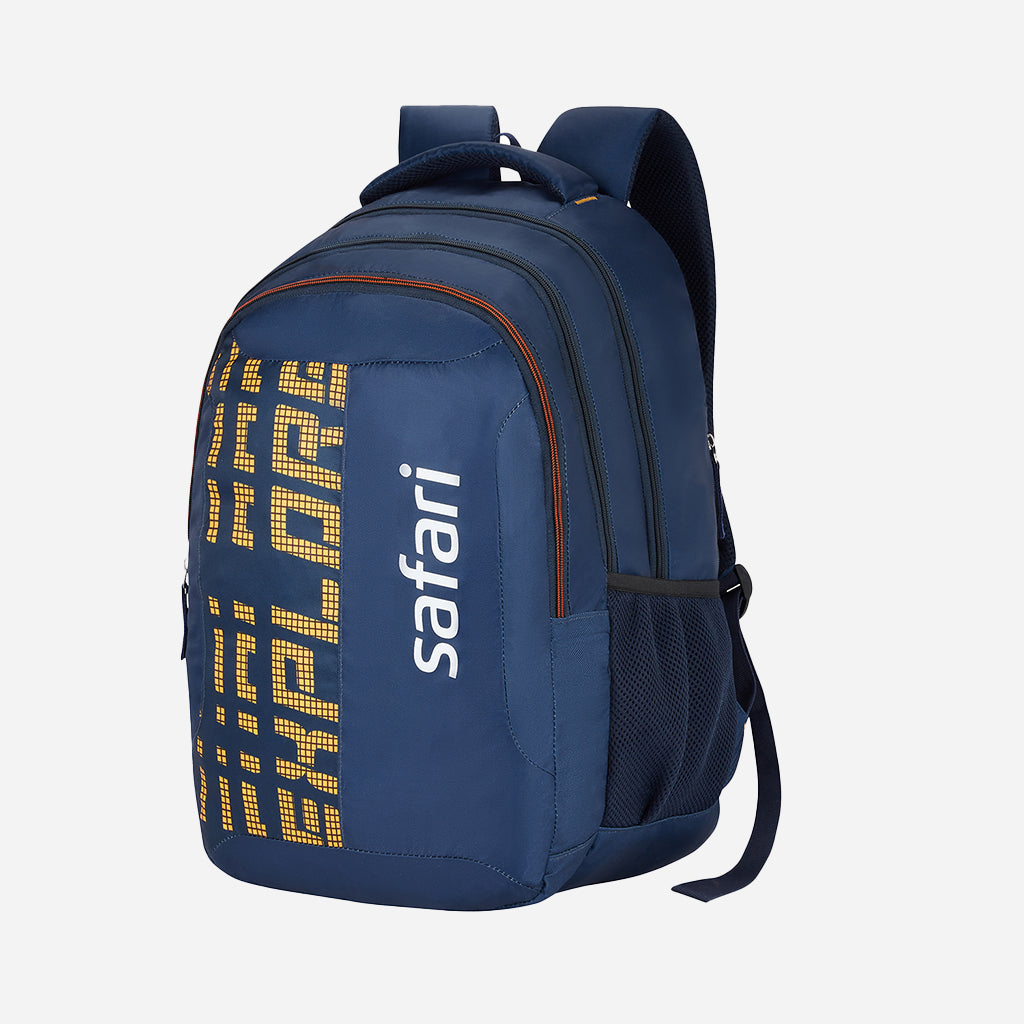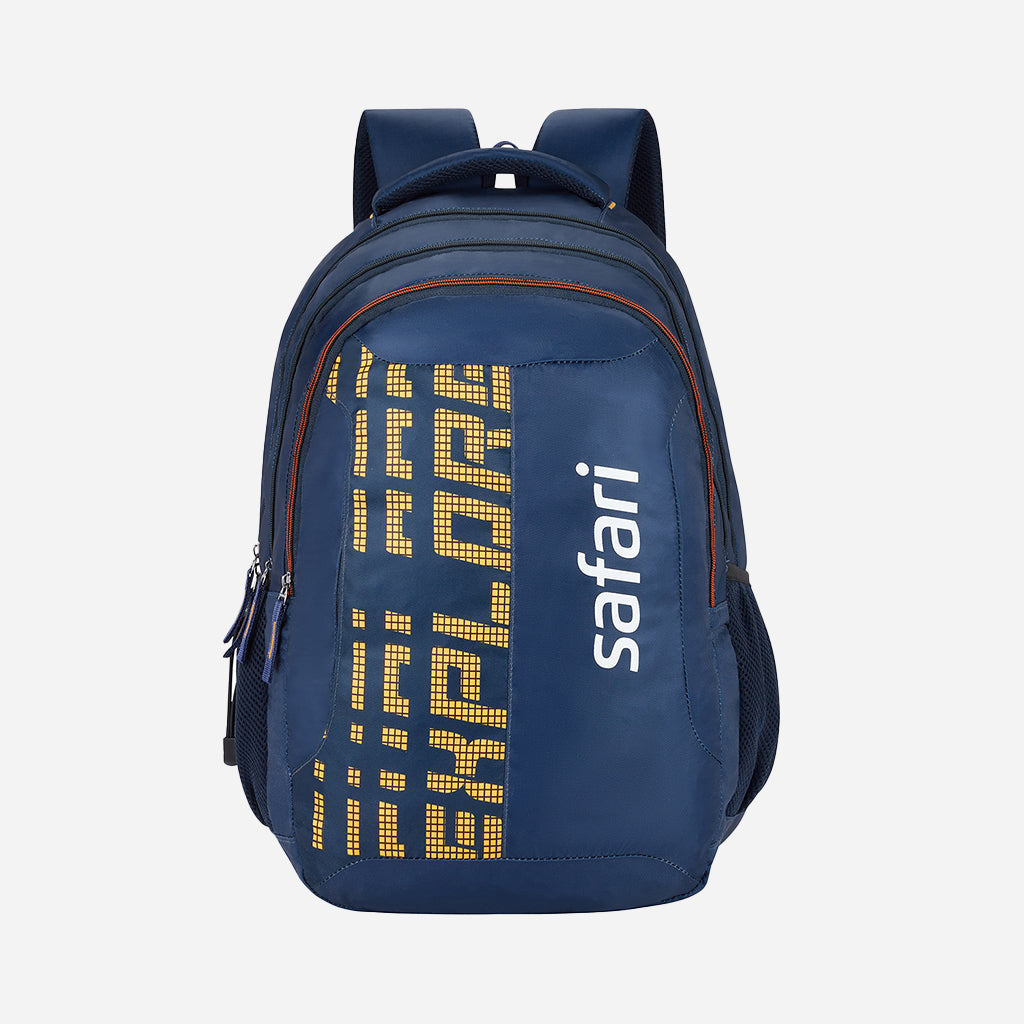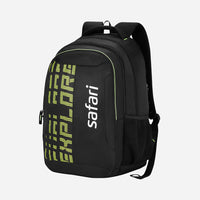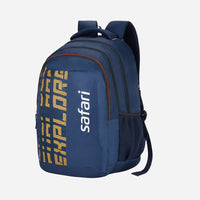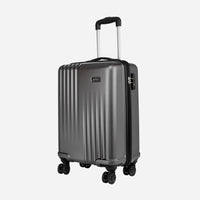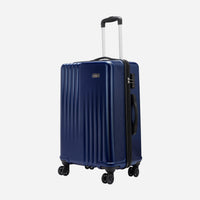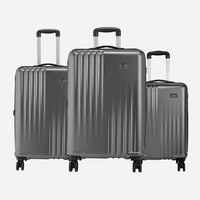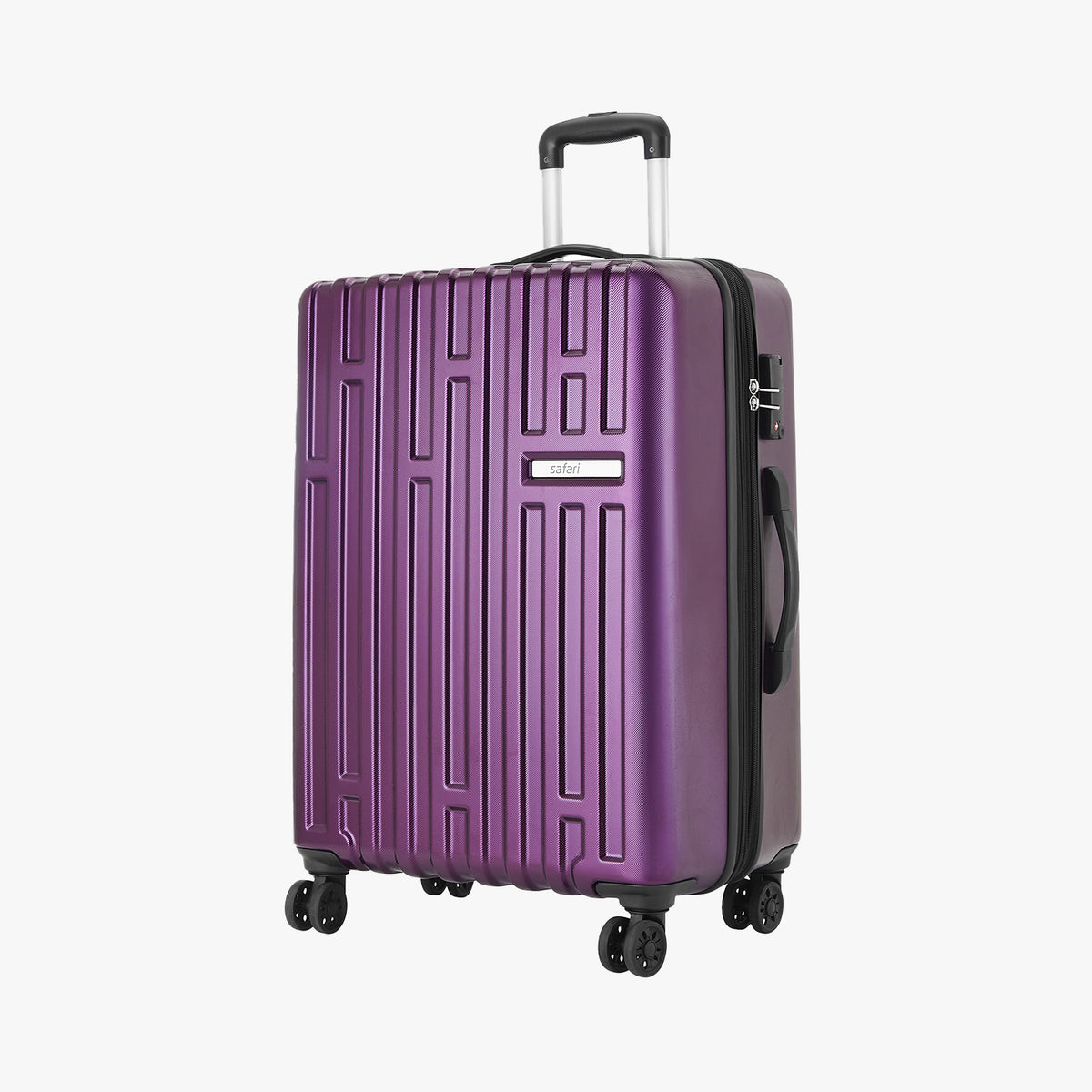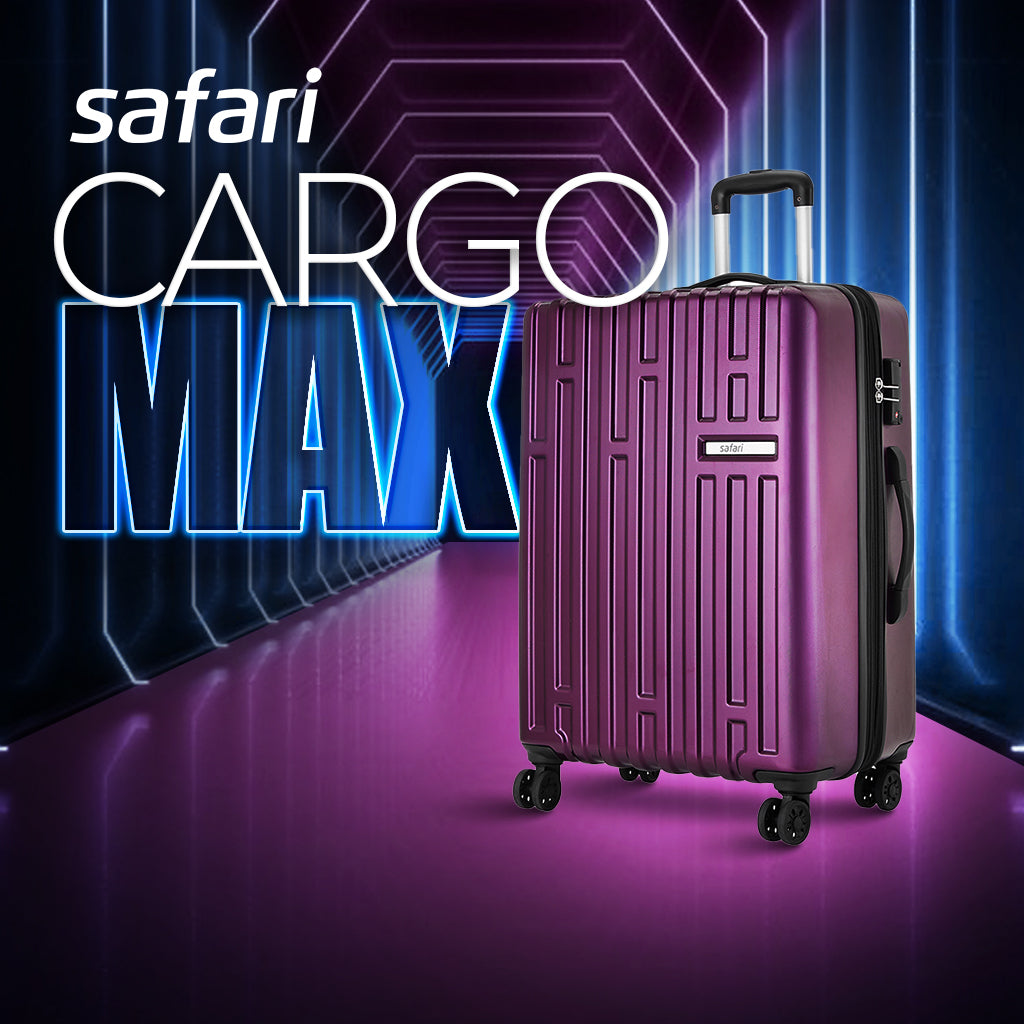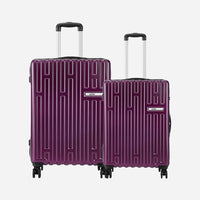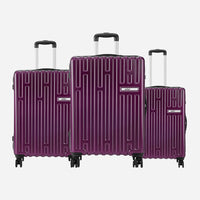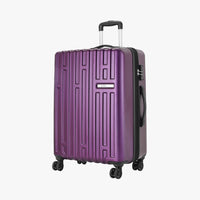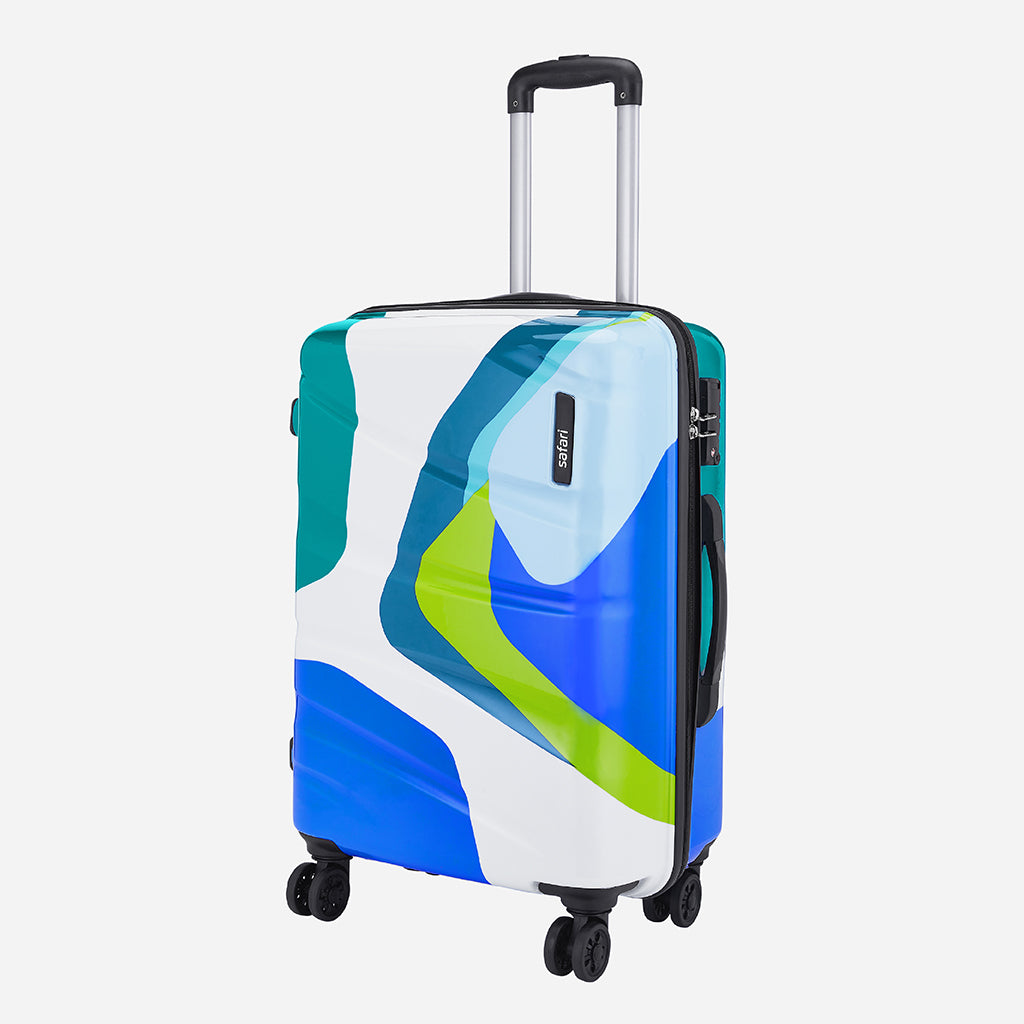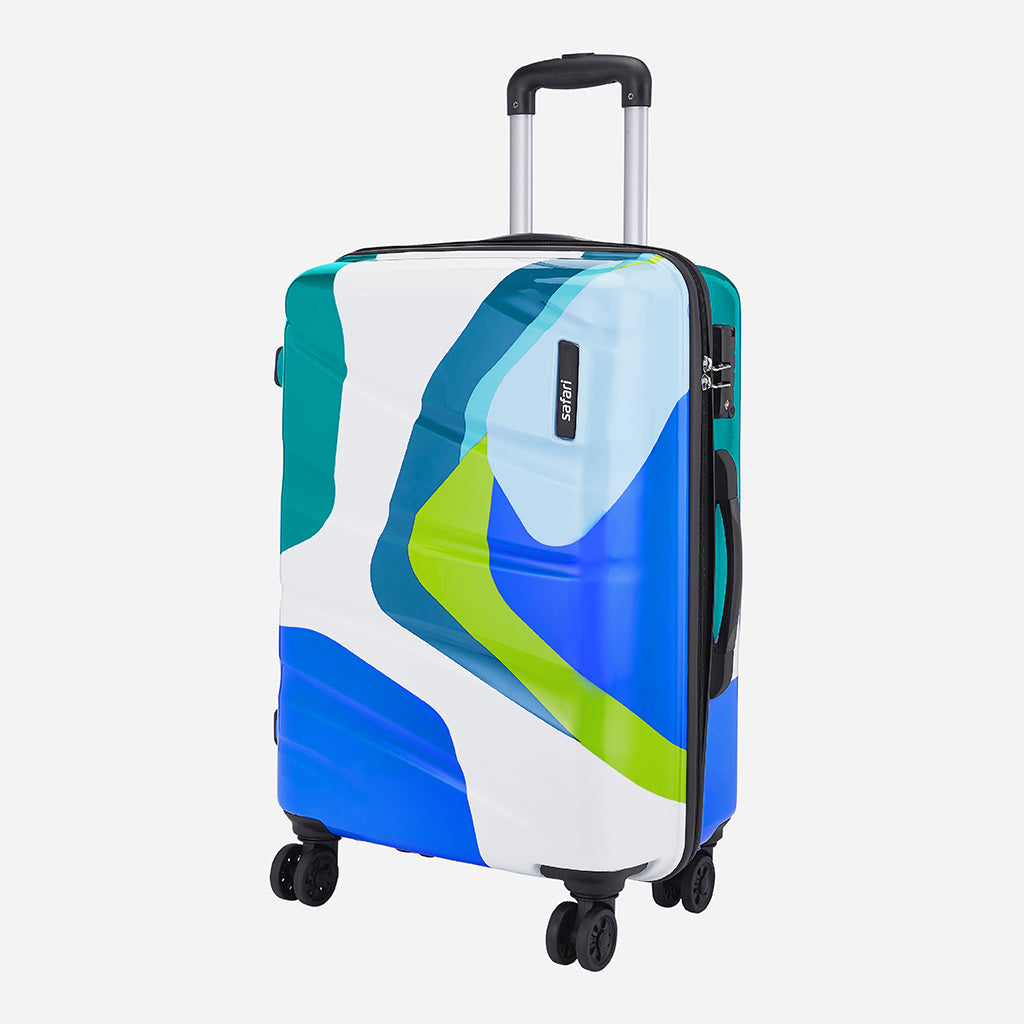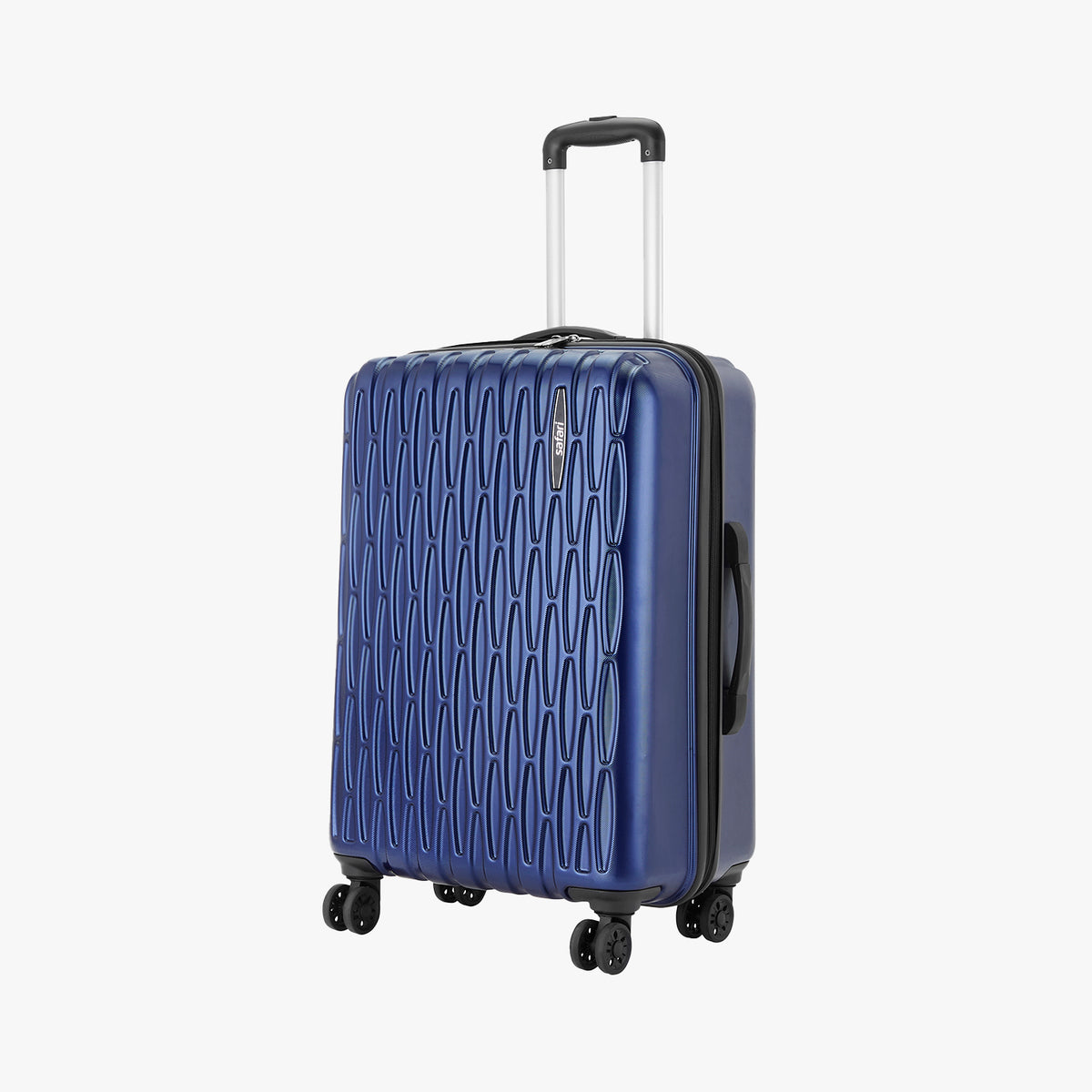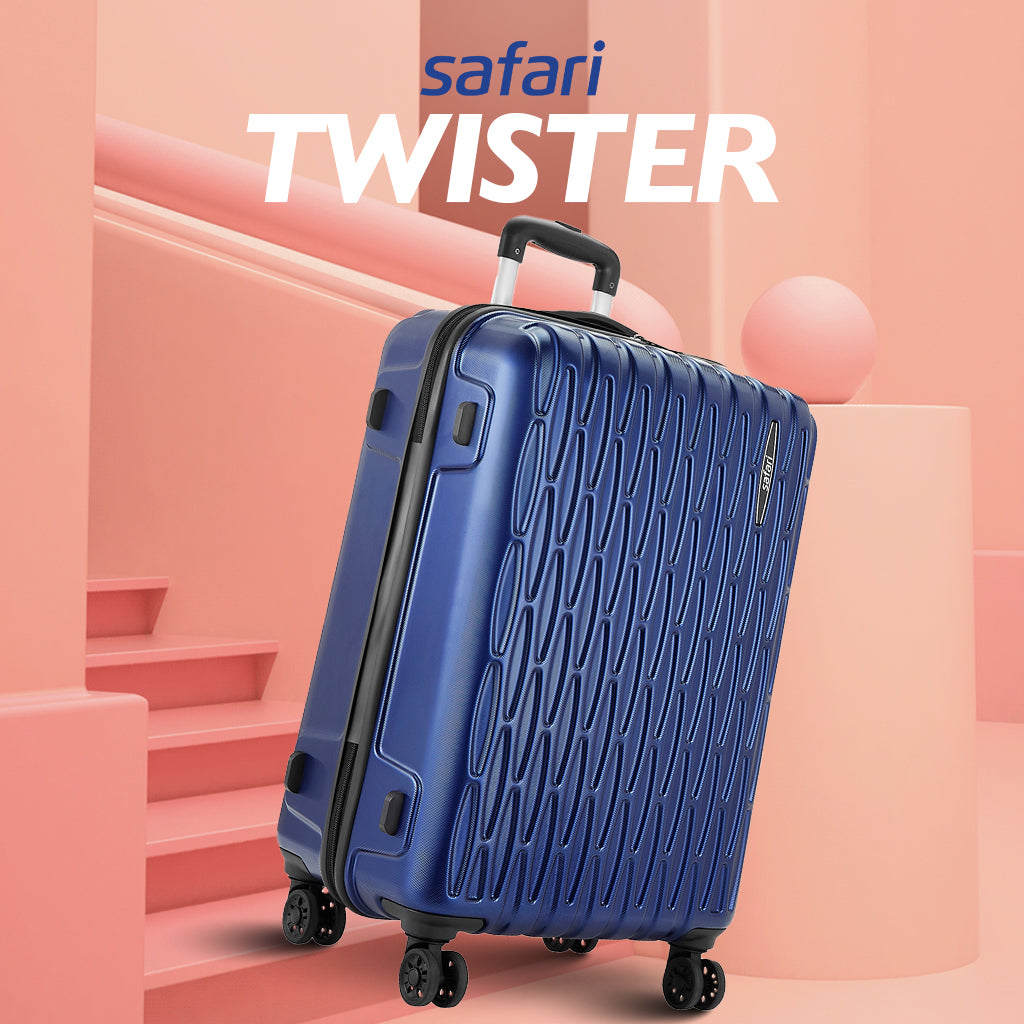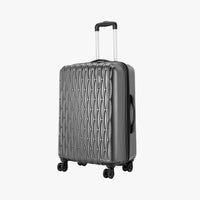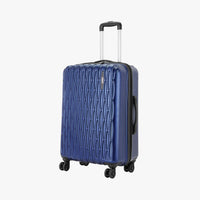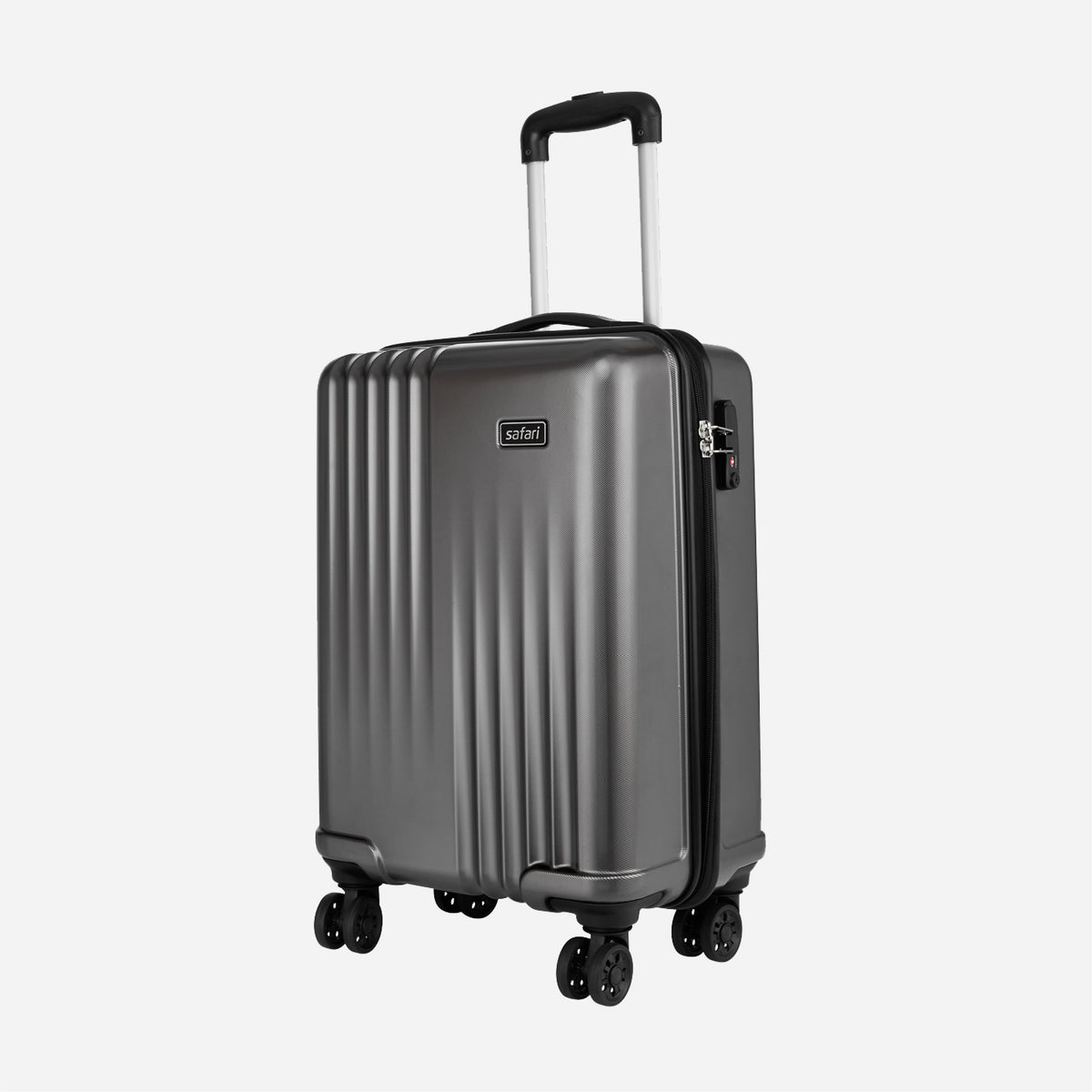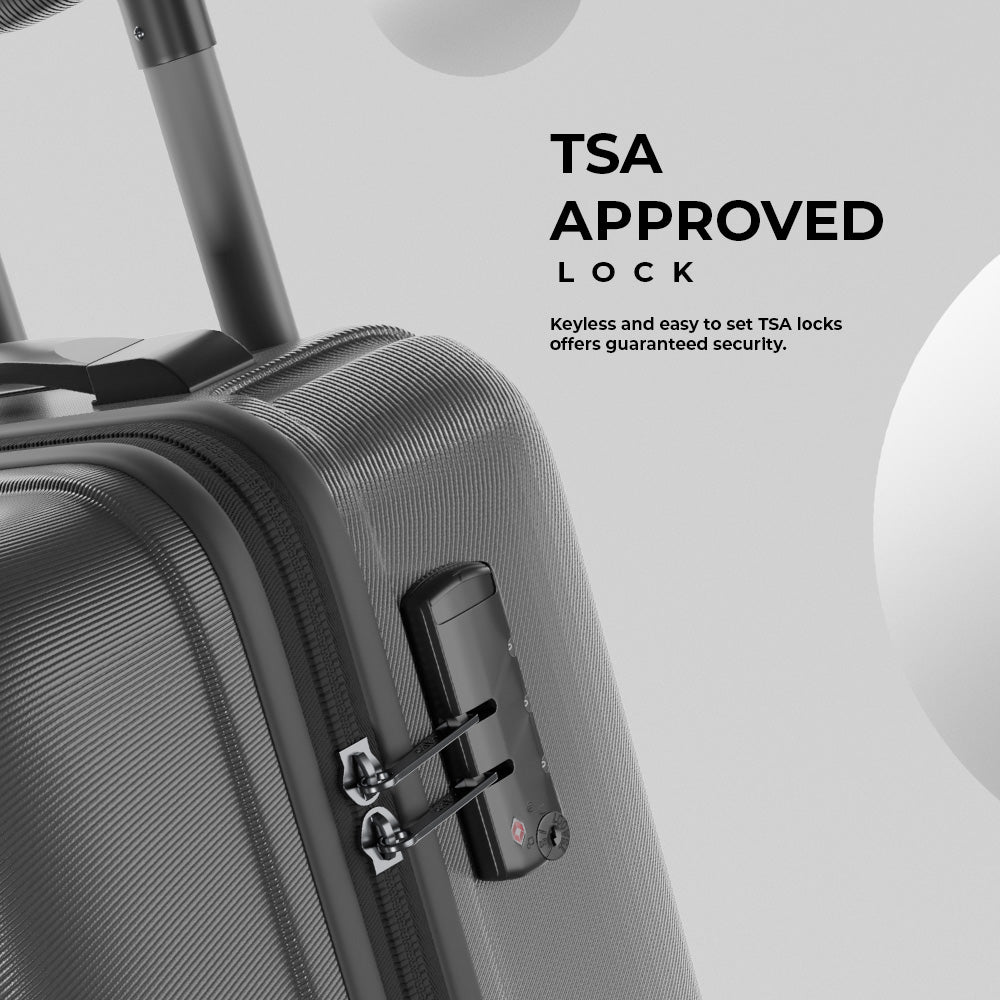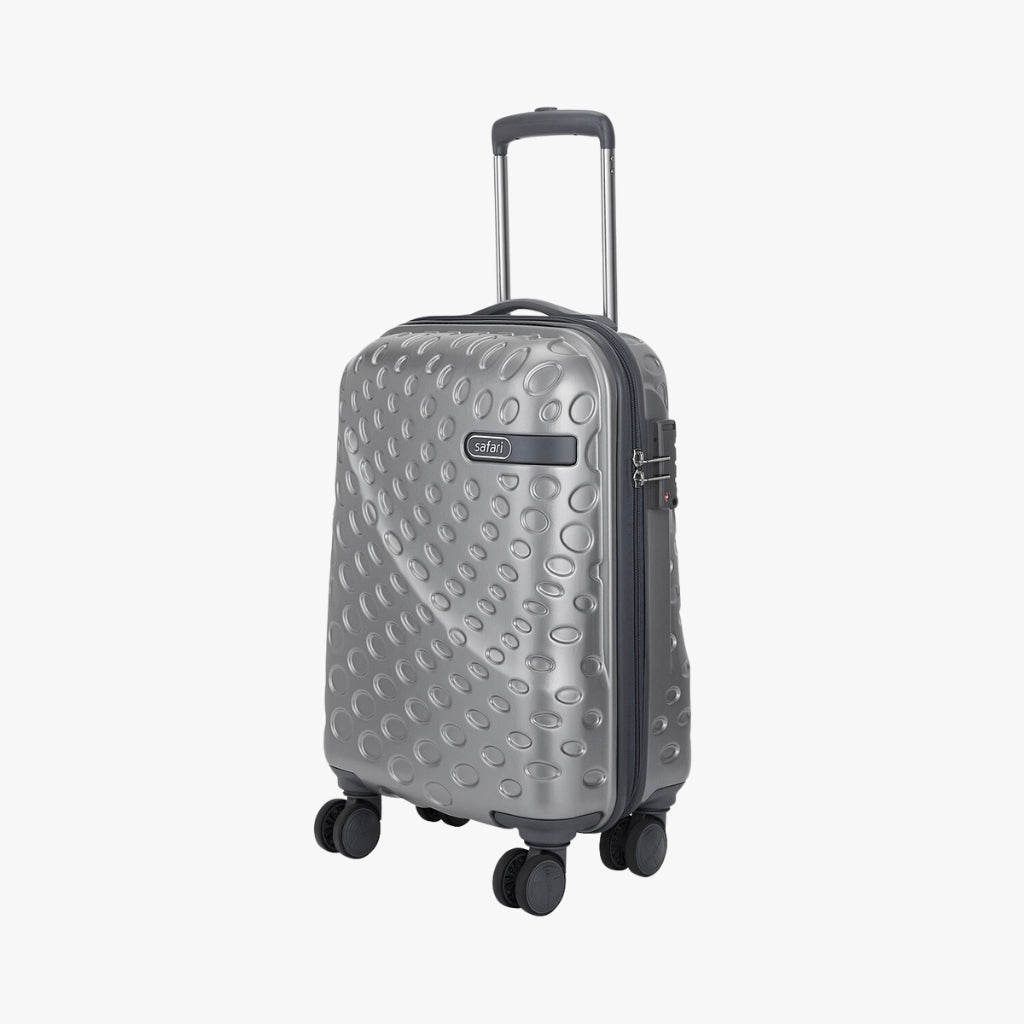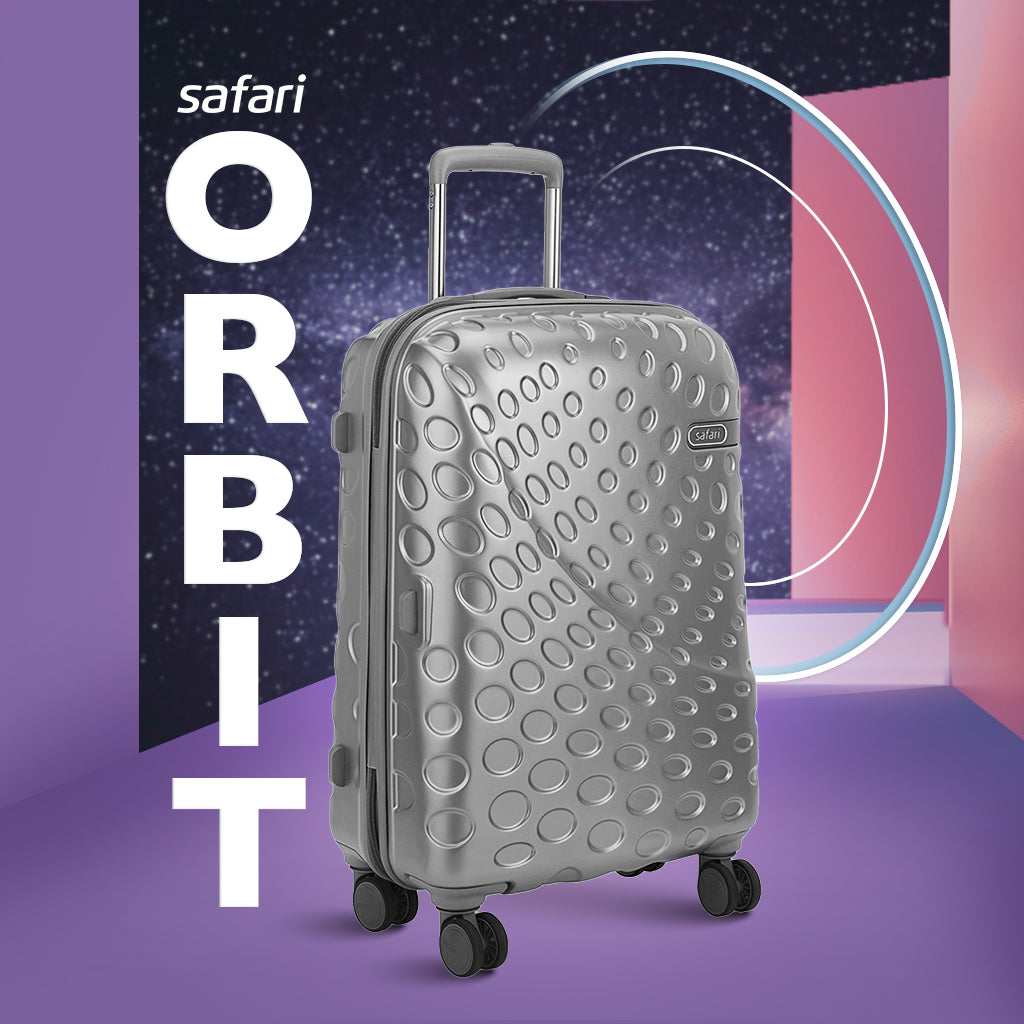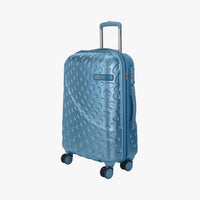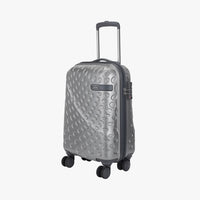What is the difference between a carry-on bag and checked baggage?
A carry-on bag is designed for convenience, offering travelers the ease of keeping essentials close during the flight. It fits in overhead compartments, making it accessible throughout the journey. Opt for Safari’s office backpacks and laptop backpacks to ensure peace of mind during air travel.
On the other hand, checked baggage provides more space for belongings but requires stowing in the cargo hold. While carry-ons suit quick getaways and ensure a smoother airport experience, checked bags accommodate larger items for extended trips, offering a trade-off between accessibility and capacity.
How do I know if I need a carry-on or checked luggage?
Choosing between a carry-on vs checked baggage depends on the nature and duration of your trip. If you're on a short business trip or weekend getaway for a Budget Traveler, a carry-on backpack suffices for essentials. For longer vacations with more items, a checked bag offers ample space. Consider factors like airline baggage policies, trip duration, and personal convenience. If you need easy access to belongings, a carry-on is preferable, but for extended travel, opt for a checked bag for added capacity.
Comparing Carry-on Vs Checked Baggage Head to Head
|
Criteria |
Carry-on Luggage |
Checked Luggage |
|
Size Limit |
Maximum size - 56 cm × 45 cm × 25 cm |
Maximum total combined dimensions (l+b+h) - 157 cm/62 in |
|
Accessibility |
Easily accessible during the flight. |
Only accessible upon arrival. |
|
Capacity |
15-20 kg |
23-30 kg |
|
Security |
Kept with the passenger. |
Stored in the cargo hold. |
|
Fees |
Often included in the ticket price. |
May incur additional fees. |
|
Check-In Process |
Can be brought through security. |
Requires check-in at the counter. |
|
Examples of Use |
Short business trips, weekend getaways. |
Extended vacations, family trips. |
What Is a Check-in Bag?

A check-in bag refers to luggage that passengers hand over to the airline during the check-in Desk process at the airport. These bags are typically larger and hold belongings that travelers don't need immediate access to during the flight. Check-in trolley bags or luggage are often stowed in the cargo hold. The process involves dropping off the bag at the airline's check-in counter or designated area, where it is then tagged and transported to the plane for later retrieval upon arrival at the destination.
What items are not allowed in a check-in bag?
Certain items are restricted or prohibited in check-in bags, including hazardous materials and items that pose safety risks. Commonly restricted items include explosives, flammable materials, sharp objects, and perishable items. It's crucial to check with the airline's specific regulations and adhere to International Flights aviation safety guidelines. Additionally, some airlines may have restrictions on valuable or fragile items, recommending passengers carry them in their carry-on bags instead of checking them in trolley bags to ensure their safety.
What items are allowed in a check-in bag?
Check-in bags allow for packing various non-hazardous items such as clothing, toiletries, electronics, and personal belongings, Medical Equipment. Specific guidelines may vary by airline, so it's advisable to check individual regulations to ensure compliance. Valuables, important documents, and medications are often recommended to be kept in carry-on bags for accessibility and security.
TSA Liquid Rules:
TSA liquid rules refer to regulations set by the Transportation Security Administration regarding the transport of liquids in carry-on bags. The rules aim to ensure aviation security by limiting the quantity of liquids that passengers can bring on board. Here are the key rules :
- Liquids must be in containers of 3.4 ounces (100 milliliters) or less.
- All liquids must fit in a single quart-sized, clear, resealable plastic bag.
- One bag per Passenger must be placed in a screening bin for inspection.
- Liquid medications exceeding 3.4 ounces are permitted in carry-on luggage, but they must be declared to TSA officers at the security checkpoint for inspection.
- Passengers with disabilities or medical conditions that require specific liquids or gels may request additional assistance or accommodations from TSA officers.
- Items such as duty-free liquids, liquid food, and beverages purchased after the security checkpoint or aboard the aircraft are allowed.
- Frozen liquids, including ice packs, are permitted as long as they are solid when presented for screening.
Size And Weight Restrictions:
When it comes to check-in bags, airlines impose weight and size requirements to ensure efficient handling and adherence to safety standards. Typically, airlines specify maximum dimensions and weights for check-in luggage. It's crucial for Full-Time travel to be aware of these Size Requirements to avoid additional fees or inconveniences at the airport.
How Much Does Check-in Baggage Cost?
The cost of check-in baggage varies among airlines and is often influenced by factors such as the airline's baggage policy, ticket class, and route. Many airlines include a certain weight or number of bags in the ticket price, while additional bags or excess weight may incur extra charges. Travelers should check with their specific airline for detailed information on check-in baggage costs.
What Are The Advantages Of Check-In Baggage?
- Extra Space and Weight Allowance : Check-in baggage provides travelers with additional space and weight allowance, allowing them to pack more items for extended trips. This is particularly advantageous for those who need to carry bulkier items or pack for various activities during their journey.
- Airport Convenience: Check-in baggage reduces the hassle at the airport, as passengers don't have to maneuver through security with large or heavy bags. It streamlines the check-in process, making it more convenient for international travel to move through the airport without the burden of oversized luggage.
- Perfect for Oversized or Special Luggage: Larger or specialized items, such as sports equipment or musical instruments, often exceed the size limits for carry-on bags. Check-in baggage provides the ideal solution for transporting such items securely and conveniently.
- Safety of Restricted Items: Checked luggage permits the transportation of items that are not allowed in carry-on bags, such as larger liquid containers, tools, or electronic devices. This ensures that passengers can bring necessary items that might be restricted in the cabin due to size or security regulations.
- Beneficial for Long Trips: For longer journeys where more clothing and personal items are required, check-in baggage offers the necessary capacity. It allows travelers to pack enough supplies for the entire trip, reducing the need for frequent laundry or shopping during extended stays.
What Are The Disadvantages Of Check-In Baggage?
- Risk of Loss or Damage: Check-in baggage faces a higher risk of being lost or damaged during transit. Whether due to mishandling by airport staff or logistical issues, travelers may experience the inconvenience of arriving at their destination without their belongings.
- Additional Fees: Many airlines charge additional fees for checking in luggage beyond a certain weight or quantity. Travelers should be mindful of these fees, as they can significantly increase the overall cost of the trip.
- Longer Wait Times: Checking in luggage can lead to longer wait times at the airport, both during check-in and upon arrival at the destination. Passengers may need to wait at baggage claim areas, affecting the overall efficiency of their travel experience.
- Not Accessible During Flight: Unlike carry-on bags, which remain accessible throughout the flight, check-in baggage is stored in the cargo hold and is not accessible during the journey. This can be inconvenient if travelers need certain items during the flight.
- Potential of Theft or Tampering: Check-in baggage poses a risk of theft or tampering, as it is not under the direct control of passengers during the journey. While instances are rare, travelers should be aware of the possibility of unauthorized access to their checked luggage.
While check-in baggage offers convenience for transporting larger quantities of items, travelers should weigh these disadvantages against the benefits to make an informed decision based on their specific travel needs and priorities.
Best checked Bags Recommended by Luggage Experts
- Safari Ryder Gun Metal Trolley Bag With TSA Lock and Dual Wheels
- Safari Ryder Midnight Blue Trolley Bag With TSA Lock and Dual Wheels
- Safari Cargo Max Magenta Purple Expandable Trolley Bag with Premium Interior & Anti Theft Zipper
- Safari Chroma Plus Printed Trolley Bag with TSA Lock
- Safari Twister Midnight Blue Trolley Bag with Dual Wheels & TSA Lock
What is a carry-on bag?

- Definition: A carry-on bag is a type of luggage that passengers can bring into the cabin of an airplane.
- Difference from Checked Baggage: Unlike checked baggage, which is stowed in the cargo hold, carry-on bags remain with the passenger in the cabin. They are stored in overhead compartments or beneath the seat.
- Passenger Preference: Passengers often choose carry-on bags for air travel due to their convenience. They provide quick access to essential items during the flight and eliminate the need for waiting at baggage claim areas.
- Screening Process: Carry-on or cabin bags go through airport security screening. They are subjected to X-ray examination at security checkpoints to ensure compliance with airline regulations and to identify any prohibited items.
What is the maximum size and weight for carry-on luggage?

The maximum size and weight for carry-on luggage can vary by airline to airline, so it's essential to check the specific regulations of the airline you are traveling with. However, as a general guideline:
- Size Limit: Most major airlines allow carry-on bags with dimensions around 22 x 14 x 9 inches (56 x 36 x 23 cm), including handles and wheels.
- Weight Limit: The weight limit for carry-on bags typically ranges from 15 to 40 pounds (7 to 18 kg).
It's crucial to verify the exact requirements of your airline to ensure your carry-on luggage and overhead space complies with their specific size and weight restrictions.
What is allowed on a carry-on bag?
Carry-on bags allow passengers to bring essential items for their journey. Typically, permissible items include personal electronics, medications, travel-sized toiletries, snacks, reading materials, and valuables. However, it's important to be mindful of liquid restrictions and prohibited items to ensure a smooth screening process at security checkpoints.
What items are not allowed in a Carry-on Bag?
Certain items are restricted from carry-on bags due to security and safety concerns. Prohibited items often include sharp objects, flammable materials, liquids exceeding 3.4 ounces, and items that can be used as weapons. Passengers should review airline and TSA guidelines to avoid bringing restricted items in their carry-on luggage.
Are carry-on bags free?
Carry-on bags are generally included for free with most airline tickets. Airlines commonly allow passengers to bring one carry-on bag and one personal item without additional charges. However, some budget may have specific policies, so travelers should review the terms of their ticket to confirm if any fees apply.
TSA Liquid Rules
TSA liquid rules refer to regulations set by the Transportation Security Administration regarding the transport of liquids in carry-on bags. Typically, liquids must be in containers of 3.4 ounces or less and fit into a quart-sized, clear, resealable plastic bag. One bag per passenger must be presented for inspection at airport security.
Size And Weight Restrictions
Carry-on bags are subject to size and weight restrictions to ensure they fit into overhead compartments and do not pose safety risks. Airlines often specify maximum dimensions, typically around 22 x 14 x 9 inches, and weight limits, which vary but generally range from 15 to 40 pounds. Passengers should adhere to these guidelines to avoid additional fees or inconveniences.
What are the advantages of carry-on luggage?
- Time Efficiency - Avoiding Check-In Queues: One of the primary advantages of carry-on luggage is the time efficiency it offers. Passengers with carry-on bags can bypass the check-in counters, avoiding long queues and saving valuable time. This streamlined process enables travelers to proceed directly to security checks and, subsequently, to the boarding gate, reducing overall airport wait times.
- Cost Saving: Carry-on luggage can lead to cost savings, especially on flights with budget or low-cost airlines. Many budget carriers offer lower ticket prices for passengers traveling with only carry-on bags, eliminating additional fees associated with checked baggage. This makes carry-on travel an economical choice for budget-conscious travelers.
- Less Risk of Loss or Damage: Carrying luggage in the cabin reduces the risk of loss or damage compared to checked baggage. Since carry-on bags stay with the passenger throughout the journey, there is a lower likelihood of items being mishandled, lost, or damaged during transit. This provides travelers with peace of mind regarding the safety of their belongings.
- Accessible During Flight : Another notable advantage of carry-on luggage is its accessibility with plenty of space during the flight. Passengers can easily retrieve items from their carry-on bags stored in overhead storage space or beneath the seat without the need to wait for the plane to land. This accessibility is particularly beneficial for grabbing essentials like snacks, reading materials, or personal devices during the journey.
What are the Disadvantages of carry-on luggage?
- Size Restrictions: One notable disadvantage of carry-on luggage is the size and luggage restrictions imposed by airlines. Most carriers have specific dimensions that carry-on bags must adhere to, typically around 22 x 14 x 9 inches. These size constraints can limit the amount of clothing and personal items travelers can bring, especially for longer trips or those with specific packing needs.
- Limited Packing Space: Carry-on bags provide limited packing space compared to checked luggage. Travelers may find it challenging to pack for extended vacations or carry bulkier items. The need to fit everything into a compact space can lead to strategic packing decisions and sacrifices in terms of wardrobe choices or the inclusion of additional items.
- Security Restrictions: Security restrictions on liquids and certain items pose a disadvantage for carry-on luggage. The Transportation Security Administration (TSA) enforces rules on the quantity and packaging of liquids, requiring them to be in containers of 3.4 ounces or less and placed in a quart-sized, clear, resealable plastic bag. This can be inconvenient for those who prefer to travel with larger quantities of liquids or specific items that may be restricted.
Best checked Bags From Safari Bags
- Safari Ryder Gun Metal Trolley Bag With TSA Lock and Dual Wheels
- Safari Ryder Midnight Blue Trolley Bag With TSA Lock and Dual Wheels
- Safari Twister Midnight Blue Trolley Bag with Dual Wheels & TSA Lock
- Safari Chroma Plus Printed Trolley Bag with TSA Lock
- Safari Orbit Trolley Silver Bag with Premium Interior
Takeaway
In conclusion, the decision between carry-on bag vs checked bag hinges on various factors depending upon the type of trip, each offering distinct advantages and disadvantages. Carry-on bags provide efficiency, cost savings, and accessibility during the flight, making them ideal for short trips with less luggage weight and those seeking to avoid check-in queues. However, they come with size restrictions and limited packing space. On the other hand, checked luggage offers more room for belongings but entails longer check-in processes and the risk of loss or damage. Travelers should weigh these considerations based on the duration of the trip, personal preferences, and airline regulations to make an informed choice that aligns with their specific travel needs.
FAQs
Can I take 2 bags as checked luggage?- Most airlines typically allow passengers to check multiple bags, but it often incurs additional fees. The specific policy varies by airline, so travelers should check with their airline to understand the baggage allowance and associated costs.
- In many cases, airlines offer discounted rates for check-in baggage when paid for online in advance. Booking and paying for baggage during the online check-in process can be more cost-effective compared to paying for it at the airport counter.
- Yes, most airlines permit passengers to bring both a carry-on bag and a personal item, such as a purse or laptop bag, on board. However, it's essential to adhere to the airline's specific size and weight restrictions for each type of item.
- While it's physically possible to place a smaller carry-on bag inside a larger checked bag, it's not a common practice and may not be practical due to space constraints. Additionally, the weight limit for checked baggage should be considered to avoid exceeding airline regulations.
- The allowance for carry-on bags varies by airline, but most airlines permit passengers to bring one carry-on bag and one personal item on board. It's crucial to check the specific policies of the airline you are traveling with to ensure compliance with their guidelines.

 Return Request
Return Request
